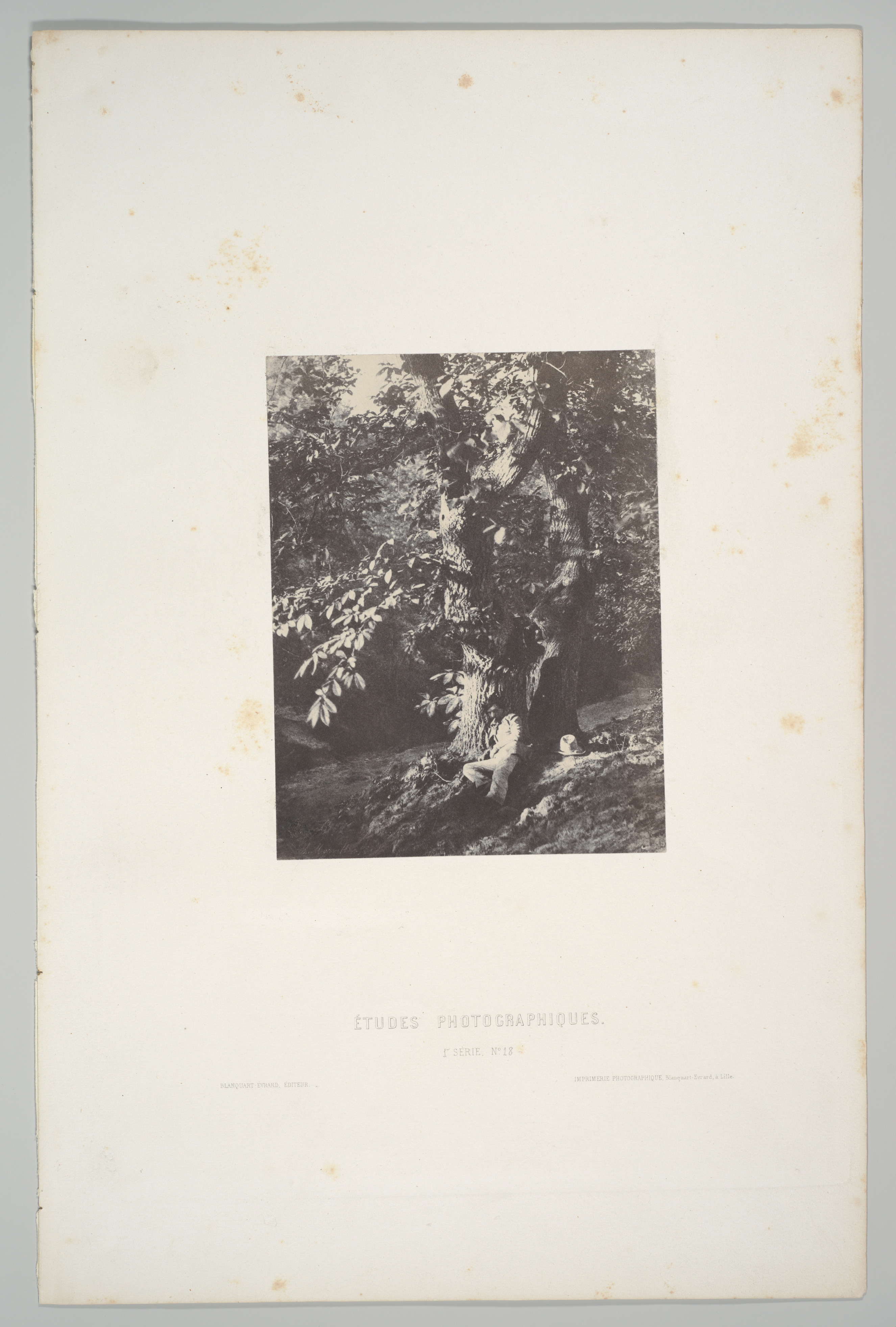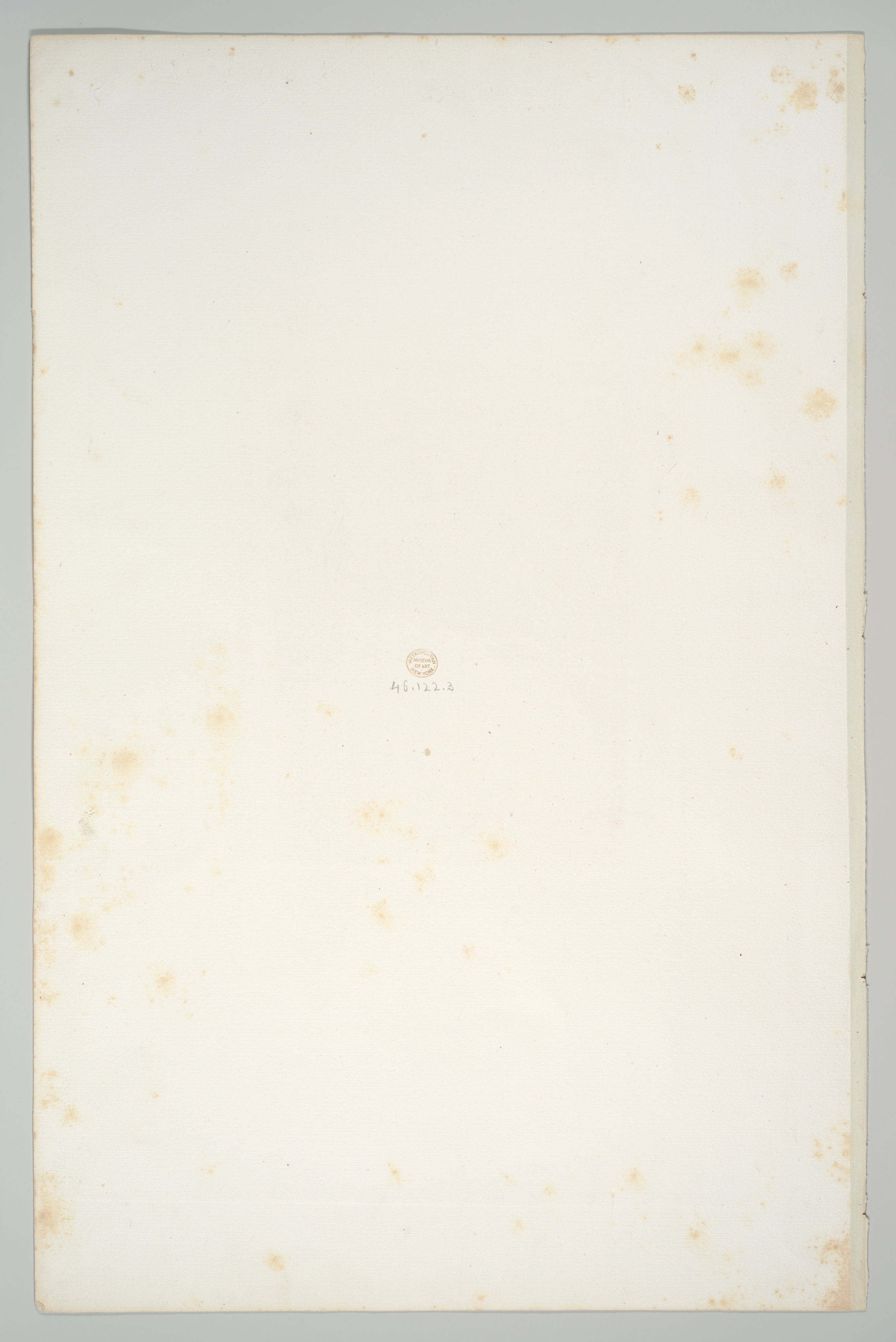Homme allongé au pied d'un chàtaignier
Charles Marville French
Printer Imprimerie photographique de Blanquart-Évrard, à Lille French
Not on view
Louis-Désiré Blanquart-Évrard pursued William Henry Fox Talbot's negative/positive experiments and by 1851 was confident enough to open a factory in the outskirts of Lille, in northern France, that cleared the way to mass-producing photographs in the same quantities as traditional prints. At last, photography could hope to succeed as both art and industry. A frequent collaborator of Blanquart-Évrard, Marville contributed more than one hundred photographs, mostly architectural views, to the publisher's many portfolios.
This image is somewhat atypical of Marville's oeuvre. Its atmosphere of intimacy and nonchalance evokes the achievements of the wealthy amateur photographers of the time more than the severe architectural views usually associated with Marville. However, it was published in Blanquart-Évrard's album, Études photographiques (1853), the title of which suggests that such pictures were intended as studies for artists.
Due to rights restrictions, this image cannot be enlarged, viewed at full screen, or downloaded.
This artwork is meant to be viewed from right to left. Scroll left to view more.




